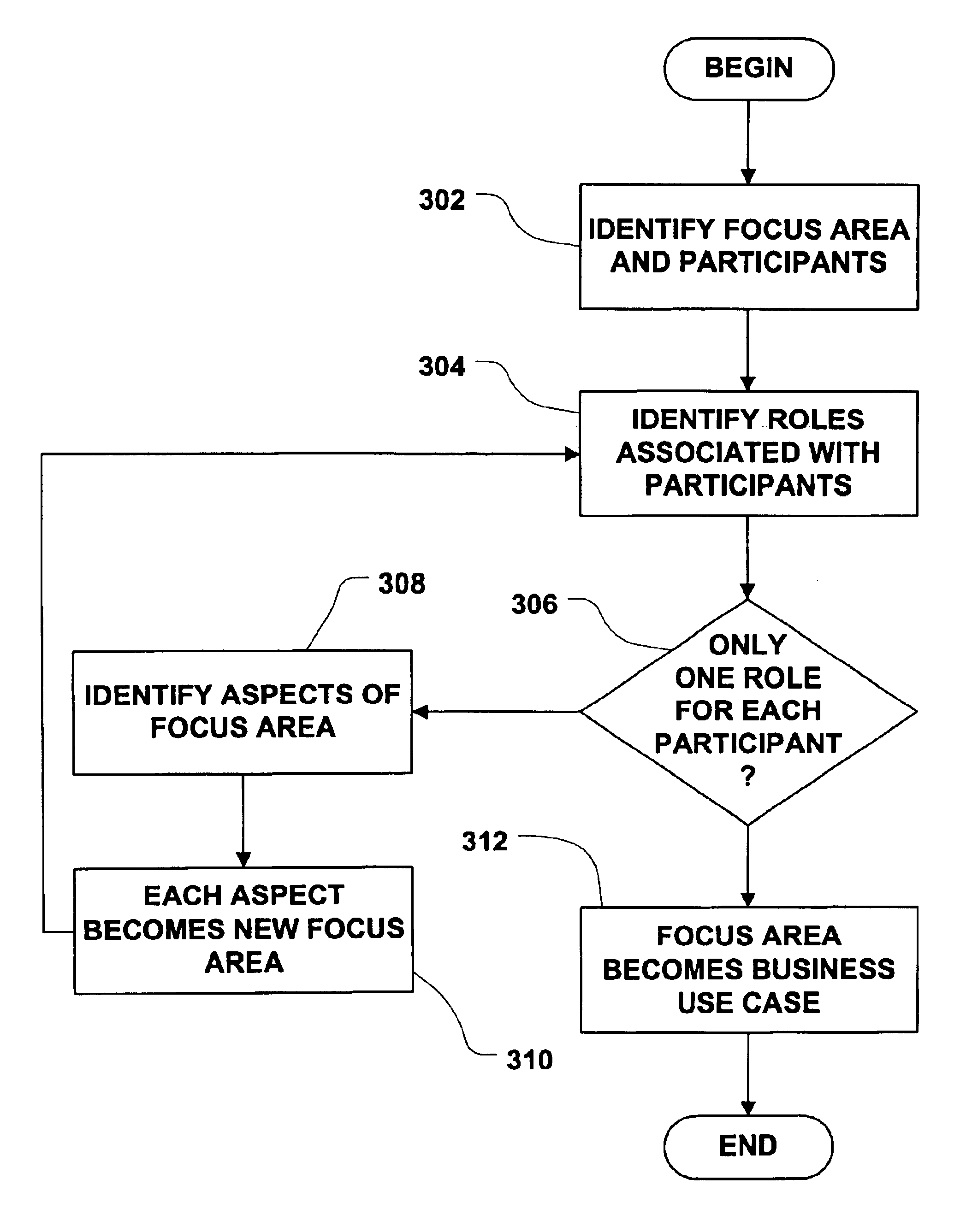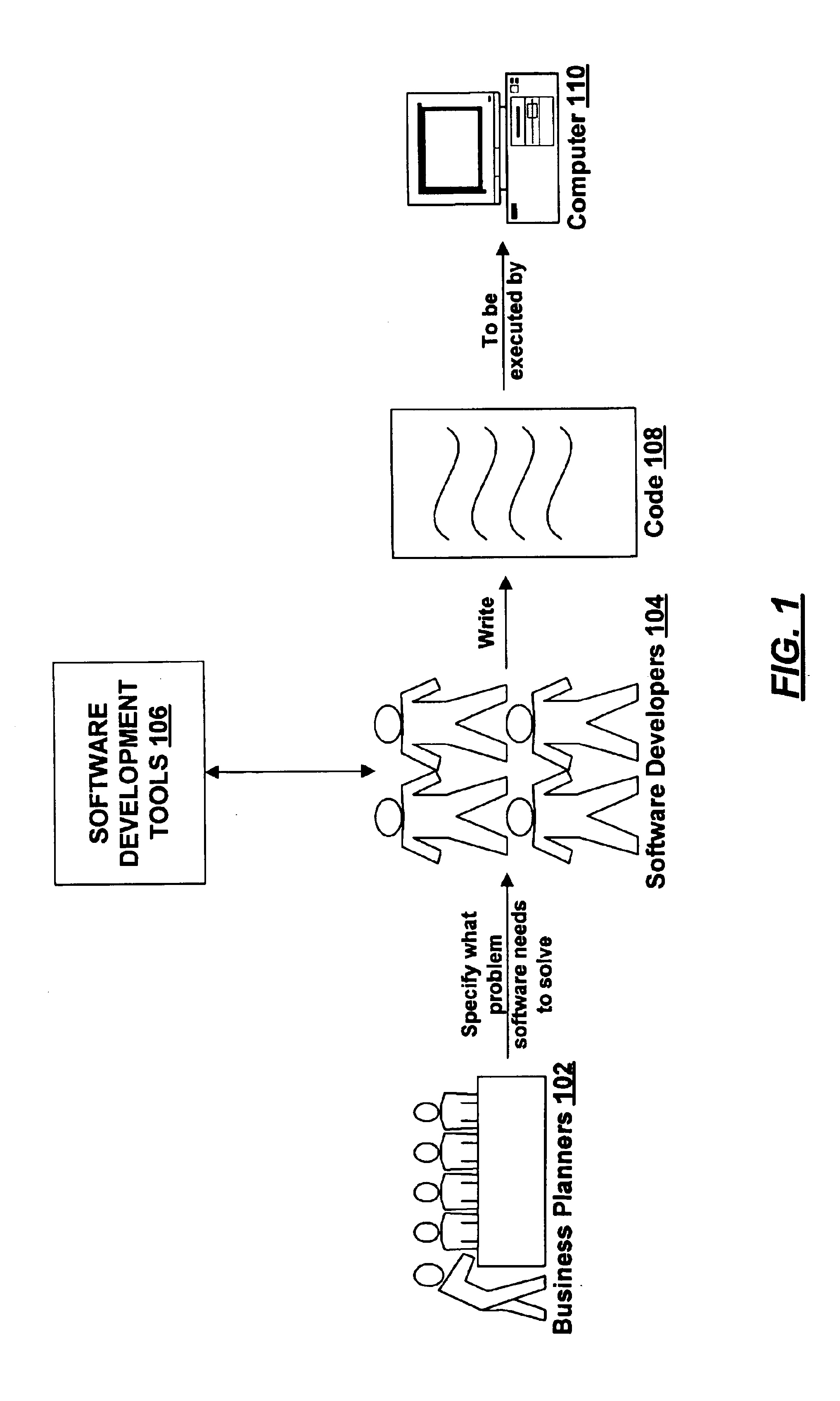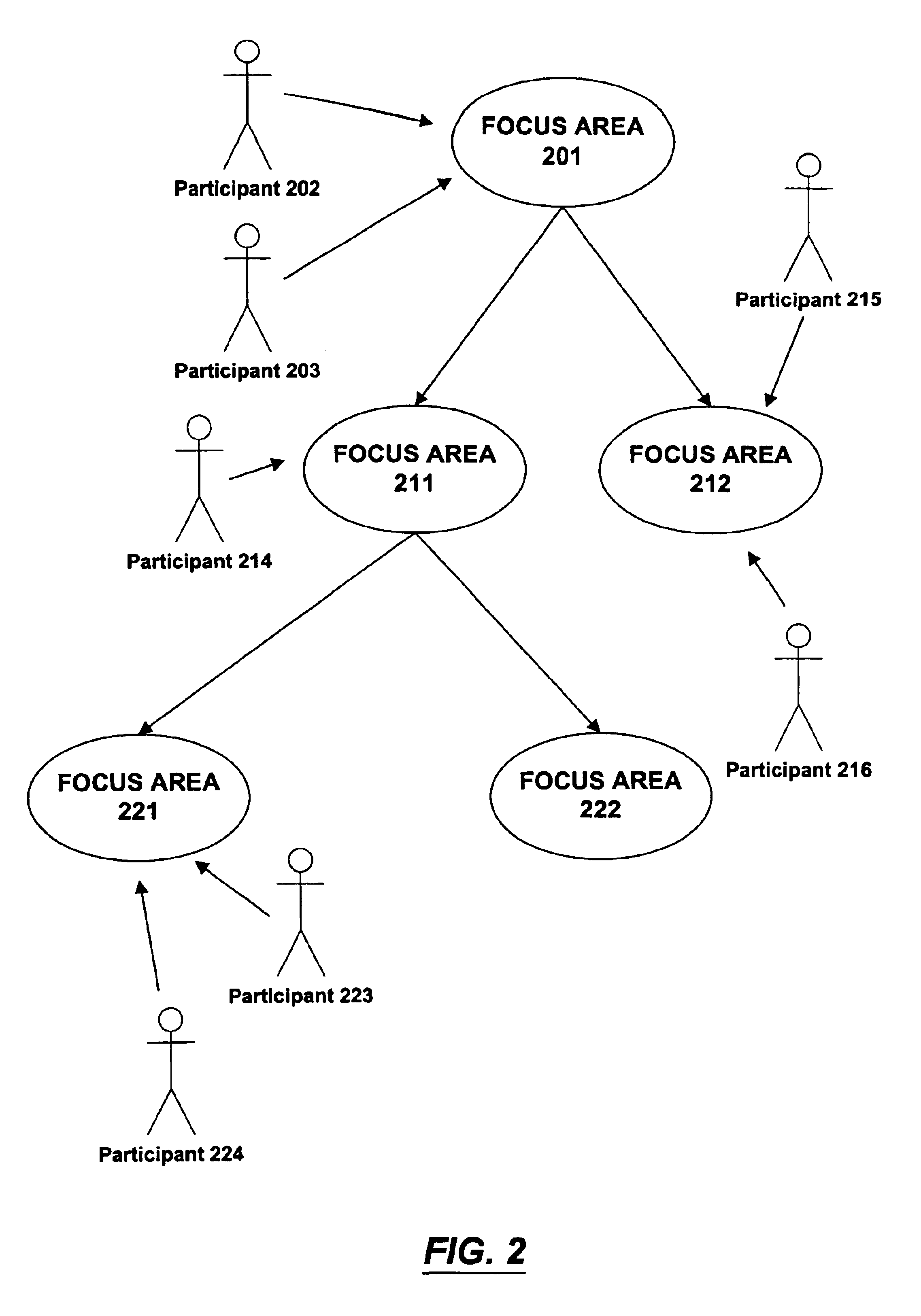Software development methodology including creation of focus areas and decomposition of same to create use cases
a software development and focus area technology, applied in the field of computer-assisted software engineering, can solve the problems of software developers, use cases still have drawbacks, and much lower abstraction levels
- Summary
- Abstract
- Description
- Claims
- Application Information
AI Technical Summary
Benefits of technology
Problems solved by technology
Method used
Image
Examples
Embodiment Construction
Overview
[0019]When the software industry was in its infancy, software was typically envisioned, designed, and written by programmers. In general, programmers would attempt to understand a problem that existed in the business world, and would then write software to solve the problem as they perceived it. As the software development industry has matured, the process of software development has shifted from a focus on what problems software developers are able to solve to a focus on the processes that business people need to automate. The present invention provides a methodology for developing software based on a business process by decomposing the business process level by level until the process has been decomposed into the low-level constructs needed by programmers to implement the software. This methodology helps to prevent important aspects of the business process from being lost in the course of translating the high-level vision of a business process into the low-level constructs...
PUM
 Login to View More
Login to View More Abstract
Description
Claims
Application Information
 Login to View More
Login to View More - R&D
- Intellectual Property
- Life Sciences
- Materials
- Tech Scout
- Unparalleled Data Quality
- Higher Quality Content
- 60% Fewer Hallucinations
Browse by: Latest US Patents, China's latest patents, Technical Efficacy Thesaurus, Application Domain, Technology Topic, Popular Technical Reports.
© 2025 PatSnap. All rights reserved.Legal|Privacy policy|Modern Slavery Act Transparency Statement|Sitemap|About US| Contact US: help@patsnap.com



